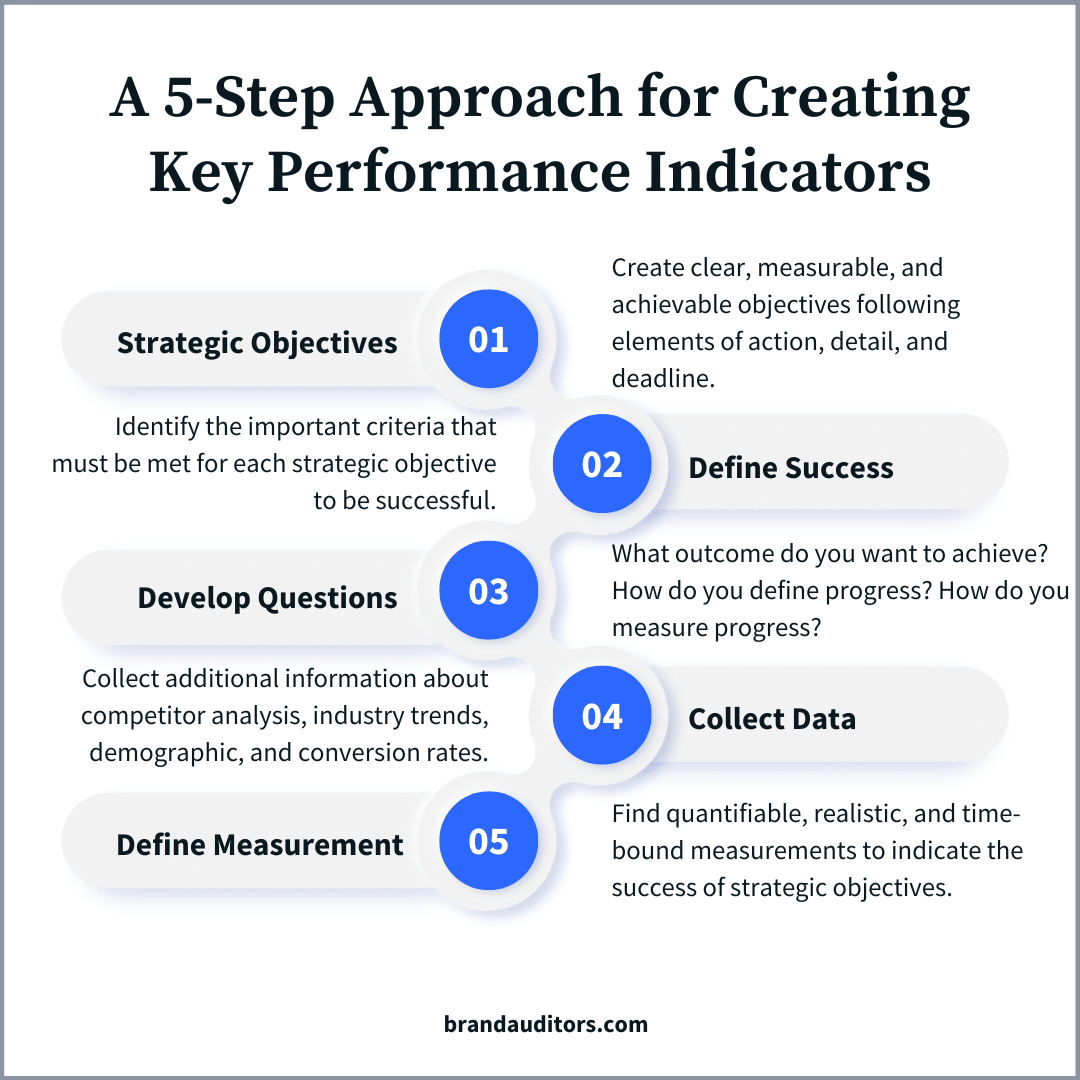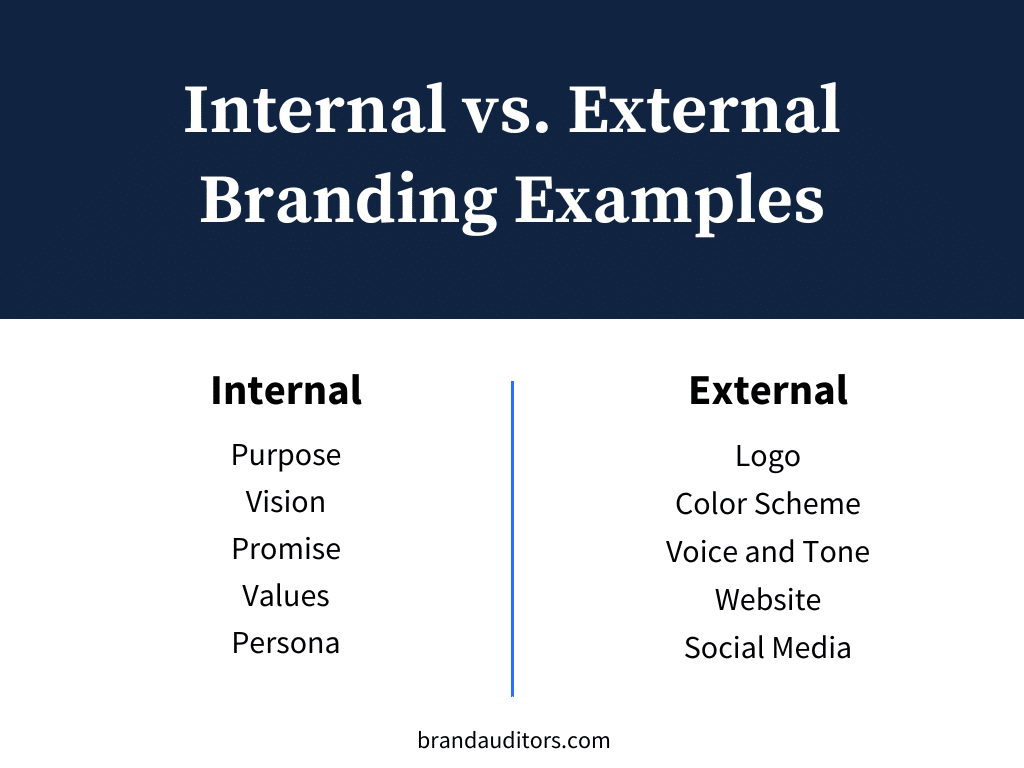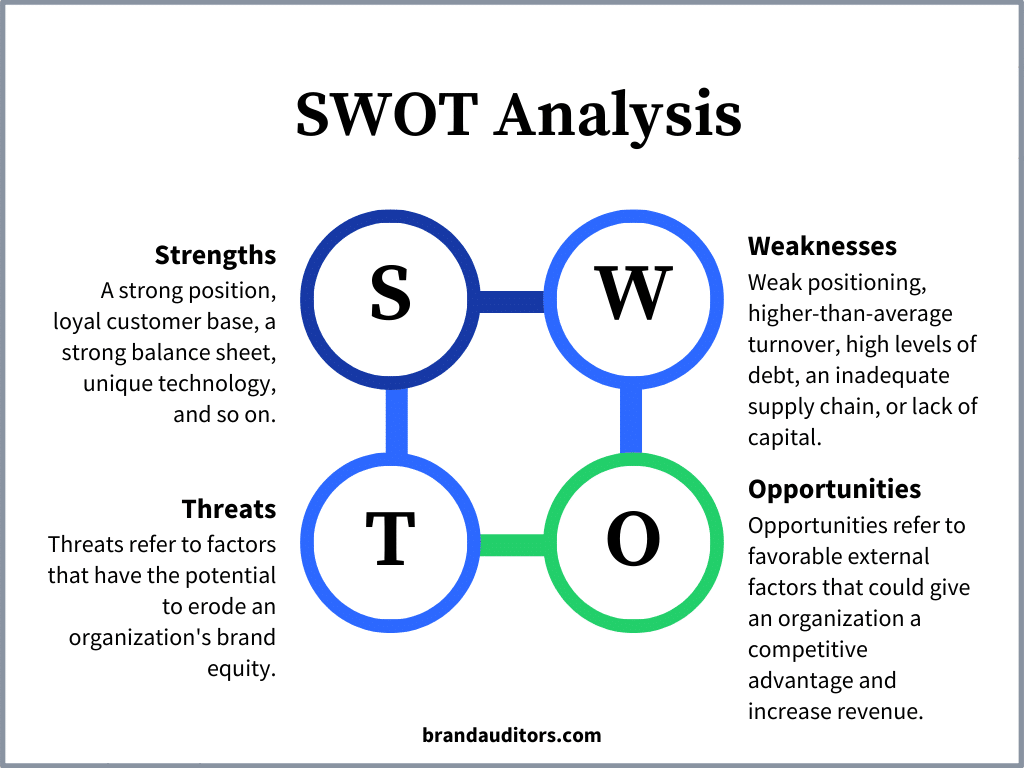How to Do a Brand Audit: An Executive’s Guide
Revolutionize your brand with our step-by-step guide for CMOs. Master the art of brand auditing to boost performance, gain insights, and spark transformation.
POST UPDATED:
September 27, 2025

Key takeaways
A brand audit helps companies gain reliable insights and data they can use to make strategic decisions. This information also reduces the risk of wasting resources.
To conduct a successful brand audit, companies should follow a proven framework that includes goal-setting, internal brand alignment, and external communication.
An effective audit relies on several key factors, such as brand perception and sentiment analysis and an assessment of the company's culture. However, reviewing data like web analytics and marketing KPIs is also critical.
Companies face do-or-die decisions about cost reduction, market expansion, and brand positioning. But it isn’t easy to get the actionable insights needed for these decisions.
A brand audit can help business leaders overcome these challenges.
Whether your organization aims to streamline operations, explore new markets, or completely rebrand, a comprehensive brand audit can give you the crucial insights you need to be successful.
An audit can also help you:
- Assess your company’s strengths and weaknesses to create a competitive advantage.
- Discover customer perception and its impact on the business.
- Optimize the brand's performance.
In this post, you will learn how to do a brand audit. We use all the recommendations and methods in this post to help our clients succeed. Your organization can benefit from them, too.
Why is a brand audit important?
An audit is an assessment of an organization's market position and brand strategy. But as a company grows, it can drift off course, losing sight of its original mission. The goal of an audit is to get the business back on track and improve brand alignment.
Signs your brand needs an audit
Business leaders should think about conducting a brand audit when they notice certain signs.
Some examples are:
- Sales are going down or staying flat.
- Customers aren't as excited about the brand as they once were.
- An influx of new competitors enter the market.
- The company's goals have changed.
Even if things appear to be fine, it's smart to do a brand audit every few years to stay relevant. Routine audits act as a health check for your company and can help business leaders isolate small problems before they become major issues.
Brand audit process overview
A detailed brand audit framework is a must when conducting an evaluation of your business. Here's why you need one and how to create it:
- Structure: ensures you don't miss important aspects of brand analysis.
- Consistency: allows for a reliable evaluation across different time periods or between various products/services.
- Objectivity: reduces bias for areas of improvement.
- Efficiency: streamlines the process, saving time and resources.
- Comparability: enables easier comparison with industry benchmarks or competitors.
Steps to conduct a successful brand audit
Here are the most common steps in a thorough brand audit process:
- Define objectives
- Identify key aspects of your brand to review (e.g., logo, current position, perception)
- Develop evaluation criteria
- Choose research methods (i.e., surveys, interviews, analytics)
- Set a timeline
- Assign responsibilities
- Create reporting templates to standardize data collection and analysis
- Establish benchmarks
- Plan of action
Creating brand audit goals
The first step in the audit process is to define goals. We recommend assigning a project leader to keep communication open. This person should have experience managing teams, timelines, and data.
The project leader should meet with brand departments to determine their most pressing issues. Team feedback will guide the project leaders in developing the audit framework.
Here are some questions you might use to conduct these discussions:
- What is the company's primary growth obstacle?
- What are the brand's strengths and weaknesses?
- How do competitors outperform us?
- Do customers see how we are unique? If not, how can we differentiate?
- How does each department assess brand performance?

Setting clear goals for a brand audit
Do you want to grow your market, develop customer loyalty, or create a new marketing plan?
Questions like these help you set goals. Once you have set objectives, deciding which areas to analyze will be easier.
Key performance indicators help you measure the results. So, having them in place is critical before you begin.
Examples of audit KPIs
For example, you might measure:
- Social media analytics include likes, shares, and comments on social media posts. These KPIs might help you assess and increase brand awareness.
- Website analytics reveal traffic sources, page bounce rates, and user behavior. Web analytics can also help you measure online visibility and customer experience quality.
- Brand value is the perceived worth of the brand itself in the minds of consumers. The premium customers will pay for your products is an indicator of a brand's value.
- Customer satisfaction scores can help you assess your brand reputation and customer service quality.

Internal vs external auditing processes distinctions
There are two principal components in brand development: internal and external branding. You should include a review of both.
Internal branding
The internal brand develops through the company culture, mission statements, and values. When employees believe in what the organization stands for, they become ambassadors for it.
The internal brand shapes how teams present the company to the public. It also has a dramatic effect on productivity and morale. Organizations with strong internal brands attract in-demand talent, giving them an advantage over competitors with high turnover.
Conduct an internal assessment
Use employee surveys to measure how they perceive your brand. To find out what they think, you can ask them questions like:
- How would you explain the company's brand promise?
- What is the most significant value the company offers its customers?
- Can you explain the company's unique value proposition?
- How does your role impact the company's future?
External branding
The external brand is the public-facing side that reflects how the market perceives you. The broader market includes customers and competitors.
Here are some examples of external brand elements:
- The logo
- Website
- Social media presence
- Customer service
- Advertising campaigns
Building trust with the target audience is easier when the internal and external brands align.

Evaluate brand sentiment
The concept is simple: A positive reputation attracts customers, and a negative one pushes them away.
Customer sentiment analysis is the best way to gauge brand reputation. To do that, you can check:
- Social media: Are comments positive or negative? Does the company respond promptly and professionally to complaints?
- Search engines: Search online for news articles, blog posts, and related content. Do these paint a positive or negative picture of the business?
- Review sites: You can read reviews on Yelp or Trustpilot. Is the average rating higher than 4.5 stars? Customer feedback is critical to a company's reputation.
Keep in mind that reputation is a primary influencer of brand equity.

Target market analysis
Organizations must target the most profitable customers to achieve sustainable growth. Otherwise, customer acquisition costs will be too high, and engagement will be low.
Include a profitability analysis of each target customer segment. The goal is to determine whether you are currently targeting the best audience. If not, you may need to adjust your buyer personas.
Evaluate customer profitability
- Desire or need for your product (the stronger, the better)
- Factors that influence consumers' decisions to buy (i.e., cost-consciousness, desire for status)
- Ability to pay (i.e., Can they afford your product?)
A segment that generates high revenue is not always the most profitable if the cost to get them is also high. Revenue-based metrics, like the ones listed below, can help you analyze profit potential:
- Customer Lifetime Value (CLV)
- Average Revenue Per User (ARPU)
- Cost Per Acquisition (CPA)

Monitor competitor brands
Competition affects everything an organization does. So, it pays to know your brand's strengths and weaknesses compared to competitors. In this phase, you will examine your top competitors and use the insights to adjust your growth strategy.
Direct competitors have similar offers and target the same customers. As a result, they influence your product development, sales processes, and marketing strategy.
An indirect competitor has an offer that can be an alternative or substitute for yours.
Choose three to five direct competitors for analysis. Fewer than three may not provide enough information, and more than five can complicate this step.
Explore your competitors' strengths and weaknesses
- Review their visual identities. This includes the logo, tagline, colors, value proposition, and brand messaging. Assess each one for its uniqueness and individuality.
- Evaluate their offers. Note their product features, pricing, and benefit claims. This information helps you understand how they position themselves and who they target.
- Study their marketing strategies. Look at everything they use for promotion to understand how they connect with audiences. Study websites, advertising campaigns, content marketing, social media profiles, and other marketing channels.
- Assess their online reputations. Read reviews, customer ratings, and social media comments. You will learn how their customers feel about them, what they like, and what they don't.
Competitor analysis is invaluable. Some of the best insights and strategies we have used to help our clients came from studying competitors.

The customer experience
The customer experience (CX) refers to the public's interactions with a business. CX begins with awareness and never ends. It covers everything from sales presentations to buying a product to getting help from customer service.
For example, consider a customer who purchases a product from your online store. This person would have to use your website to learn about products and buy them using the checkout page. Once they buy, they should receive the product on time and as promised. At some point, they may have to contact customer support to get help. All these interactions work together to build a relationship with the customer.
Net Promoter Score (NPS) is a popular measure of customer experience. NPS gauges customer loyalty by asking them how likely they are to recommend a brand to others. The score is usually based on a scale of one (worst) to ten (excellent).
Reviewing customer service policies to ensure they align with your marketing and sales processes is also a good idea. Consistency is the foundation of a positive customer experience. Approximately 73 percent of customers said they would switch to a competitor after one bad experience with a brand.

Analyze web analytics data
To review web analytics:
1. Focus on key metrics: Look at important numbers like website traffic, bounce rates, time on site, and conversion rates. These tell you how well your site is performing.
2. Identify traffic sources: Check where your visitors are coming from - search engines, social media, or direct visits. This shows which channels are most effective for your brand.
3. Study user behavior: Examine how visitors navigate your site. Look at popular pages, common exit points, and the paths users take. This reveals what content resonates and where you might be losing potential customers.
4. Compare to goals: Assess how your current performance stacks up against your targets. Are you meeting your objectives for online engagement and conversions?
5. Look for trends: Analyze data over time to spot patterns. Are certain pages gaining or losing popularity? Is your overall traffic growing or shrinking?
6. Segment your audience: Break down data by user groups (e.g., new vs. returning visitors, mobile vs. desktop users). This can uncover insights about different audience segments.
7. Check technical performance: Review page load times and mobile responsiveness. Poor technical performance can harm your brand image and user experience.
By examining these areas, you'll gain valuable insights into how your brand performs online and identify areas for improvement in your digital strategy.
Review sales performance data
Here's a concise guide on how to analyze this data:
1. Analyze overall trends: Look at total sales volume and revenue over time. Identify patterns, seasonal fluctuations, and long-term growth or decline.
2. Break down by product/service: Examine which offerings are top performers and which are underperforming. This can reveal strengths and weaknesses in your product line.
3. Segment by customer groups: Analyze sales data across different customer segments (e.g., demographics, location, purchase frequency). This can uncover valuable insights about your target audience.
4. Evaluate sales channels: Compare performance across different sales channels (e.g., online, in-store, partners). Determine which channels are most effective for your brand.
5. Assess pricing strategy: Review how different price points affect sales volume and overall revenue. This can inform future pricing decisions.
6. Compare to competitors: If possible, benchmark your sales performance against industry standards or key competitors.
7. Examine conversion rates: Look at the ratio of leads to actual sales. Low conversion rates might indicate issues with your sales process or brand messaging.
8. Review customer retention: Analyze repeat purchase rates and customer lifetime value. Strong retention often indicates a healthy brand.
9. Check profitability: Don't just focus on revenue - examine profit margins across products and services to ensure your sales are contributing to overall business health.
This analysis will provide valuable insights into how your brand is performing in the market and can highlight areas for improvement or opportunities for growth.
Assess social media metrics
Assessing social media metrics is crucial for understanding your brand's online presence and engagement. Here's a brief guide on how to approach it:
1. Analyze follower growth: Track the rate of follower increase across platforms. Steady growth indicates a healthy brand presence.
2. Measure engagement rates: Look at likes, comments, shares, and clicks. High engagement suggests your content resonates with your audience.
3. Evaluate reach and impressions: These metrics show how far your content spreads and how often it's seen.
4. Monitor mention sentiment: Assess whether brand mentions are positive, negative, or neutral. This reflects overall brand perception.
5. Track click-through rates: For posts with links, examine how often users are clicking through to your website or landing pages.
6. Analyze content performance: Identify which types of posts (e.g., videos, images, text) perform best on each platform.
7. Measure response times: Check how quickly your team responds to comments and messages. Fast response times improve customer satisfaction.
8. Compare across platforms: Determine which social media channels are most effective for your brand.
9. Benchmark against competitors: Compare your metrics to those of key competitors to gauge your relative performance.
10. Assess conversion rates: If applicable, track how social media engagement translates into website visits, leads, or sales.
By analyzing these metrics, you'll gain insights into your brand's social media effectiveness, audience engagement, and areas for improvement in your digital strategy.
The marketing strategy audit
Marketing can consume a significant part of a company's budget. For this reason, we recommend assessing marketing and your brand's online presence.
Review marketing materials
Many customers will refer to your marketing collateral to learn more about your product or service. Again, consistency is crucial for every asset to be effective. Otherwise, you may confuse potential buyers.
Examples of marketing assets are:
- Brand style guide
- Email campaigns
- Brochures
- Blog posts
- Videos
- Websites
- Social media channels
- Paid advertising campaigns
- Business cards
Check your marketing materials for conflicting messages, design flaws, and overall quality. This includes online and offline marketing assets.
Here are some other factors to consider:
- Content quality: Is the copy engaging, informative, and persuasive? Is it full of industry jargon that may confuse people? Does it help establish your authority?
- Audience relevance: Does the content address customer needs and pain points?
- Calls to action (CTA): Are they compelling enough to encourage people to take action? Would the CTA get your attention?
- Conversion rate: Are marketing campaigns converting potential customers into actual buyers? Can you do anything to increase the conversion rate?
Measuring brand audit effectiveness
Now, it’s time to create an action plan. Data interpretation is an art and a science. The auditor must pay attention to detail and recognize patterns that can reveal valuable information.
Here are some tips for interpreting the data:
Spot trends
Look for recurring themes or patterns in your data. For instance, customer reviews praise one of your product's features but criticize its interface.
Identify anomalies
Watch for data points that deviate from the norm. These could signal potential problems or opportunities. For example, if you see a sudden increase in website visitors after a marketing campaign, test it again.
Correlate data
Look for relationships between unique sets of data. Perhaps regions with higher advertising spend have greater brand awareness and sales. This correlation could support the recommendation to increase the marketing budget.
Benchmarking against competitors
Compare your data with industry standards or competitor performance. If your competitors have better social media engagement, it may be time to change your strategy.
The brand audit report (with an example)
The final report includes all the details from the audit and summarizes the findings. It also provides actionable recommendations to help leadership develop an improvement plan.
Like chapters in a book, each section of the final report should support and flow into the next.

Are you ready to transform your company with a successful brand audit?
A comprehensive brand audit is not just a theoretical exercise—it's a strategic imperative for businesses seeking to maintain a competitive edge in today's rapidly evolving market. By systematically evaluating your brand's performance across key metrics, you gain actionable insights that directly impact your bottom line.
Key Takeaways:
Data-guided decision making: A brand audit provides concrete data to inform strategic decisions, aligning with the analytical approach favored by C-type personalities.
Competitive advantage: Identifying strengths and weaknesses allows for targeted improvements, appealing to the goal-oriented nature of D-type leaders.
Efficiency optimization: Streamline operations by focusing resources on high-impact areas revealed through the audit process.
ROI maximization: Ensure marketing spend delivers optimal returns by aligning efforts with audit findings.
Proactive problem solving: Address potential issues before they escalate, satisfying the preventative mindset of C-type executives.
Don't let your brand's potential remain untapped. Take decisive action now:
1. Schedule a brand audit within the next 30 days.
2. Assign a project lead to oversee the process.
3. Set clear, measurable objectives for the audit.
4. Implement changes based on audit findings within 60 days of completion.
5. Establish a regular audit schedule to maintain brand health.
Remember, in the competitive landscape of modern business, standing still is equivalent to moving backward. A brand audit is your roadmap to staying ahead. Initiate your brand's transformation today—your market position tomorrow depends on the actions you take now.
Ready to learn more?
Connect with a strategist for a no-obligation session designed to pinpoint your brand's biggest opportunities and get a clear path to successful outcomes.

POST AUTHOR
Related content

Expert Insights and Processes for Brand Analysis
Discover how comprehensive brand analysis drives business success. Learn key strategies, tools, and expert tips to refine your brand and outperform competitors.


